Greece and its sacred ancient temples
Ancient Greece has always been known not only for its magical stories with great gods but also for its ancient architecture that captivates tourists. Typically, the temple system that the ancient Greeks left behind for humanity is amazing. Greece once had a golden age, reaching the peak of human civilization. In particular, this place attracts tourists because of its world-famous Greek temples. Let's learn about the most famous temples in ancient Greece
Parthenon
This is one of the architectural works that left impressive achievements in architecture not only in Greece but throughout the world. It was built in the 5th century BC, located on the hilltop of the ancient citadel of Acroplis in Athens. The temple was built over a period of 15 years from 447 - 438 BC, with the purpose of honoring Venus - the goddess of protection, war always represents wisdom and justice.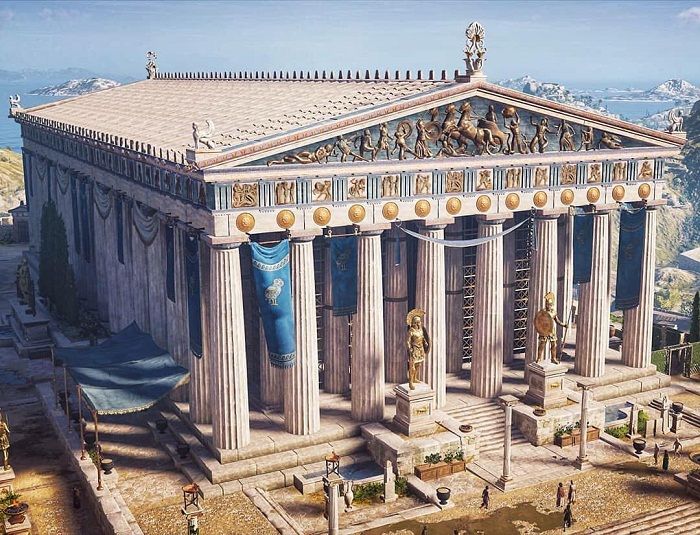
Goddess Athena is also considered a standard model for ancient Greeks to create sculptures and classical architectural works, including the Parthenon. Through many ups and downs of history under different eras, this temple has been used for many different purposes. When the Byzantine Empire ruled, it was used as a church of the Virgin Mary. During the time of the Latin empire, it became the Catholic church of the Virgin Mary.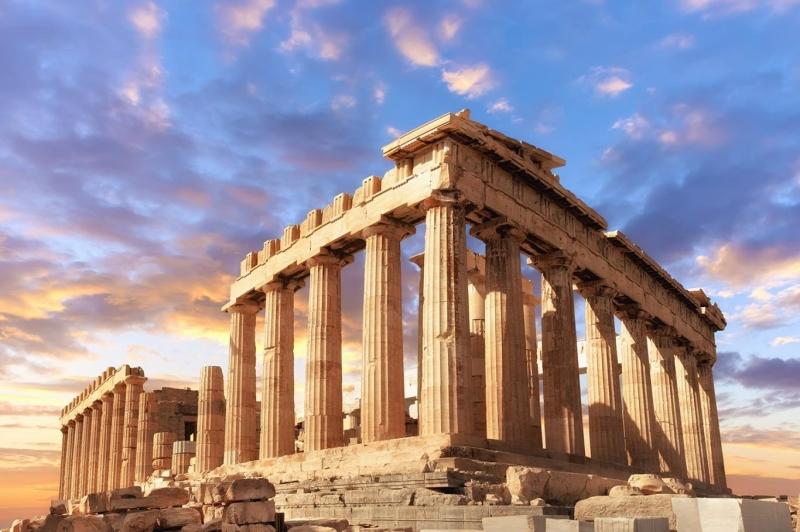
The Greek Parthenon is not the largest temple in Greece, but it represents the pinnacle of architecture. This work was also honored as one of the 7 Wonders of the Ancient World, loved by tourists. It is so high that there are many famous buildings today with similar designs such as: the facade of the White House, the New York Stock Exchange, and the Reichstag building in Berlin. Coming here, you will be able to see the Doric architectural construction directly designed and supervised by two architects, Ichtinos and Callicrates.
All marble is transported from Pentelique with extremely beautiful dispersion properties when sunlight shines on it. The temple has 18 columns on the front, next to the 17 columns and the surrounding corridor are 46 large pillars. The column is created by stacking many layers of round stones on top of each other. The entire temple was also joined together by workers without using any adhesive.
Temple of Poseidon
Majestic Cape Sounion, a strategic point rising above the Aegean Sea about 70 km from Athens in southern Attica, was known to the ancient Greeks as the "Holy Cape". On top of this cliff of 60 is one of the most important cliffs. sanctuaries in the area: temple dedicated to Poseidon, God of the Sea. Built between 444 and 440 BC, the temple is built with marble from the Agrilesa valley, about four kilometers north of Cape Sounio. 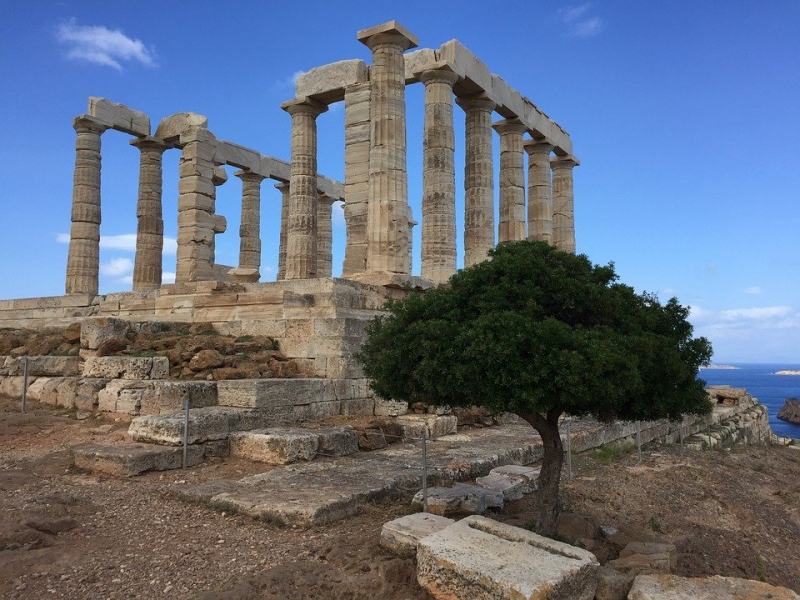
The architect is believed to be Ictinus (or Iktinos), who built the temple of Hephaestus in the ancient flora of Athens. He built the 16 columns at the Temple of Poseidon in a way that ensured they would stand the test of time and resist the harshness of the environment, and made the Doric columns more slender at the top so they appeared taller. .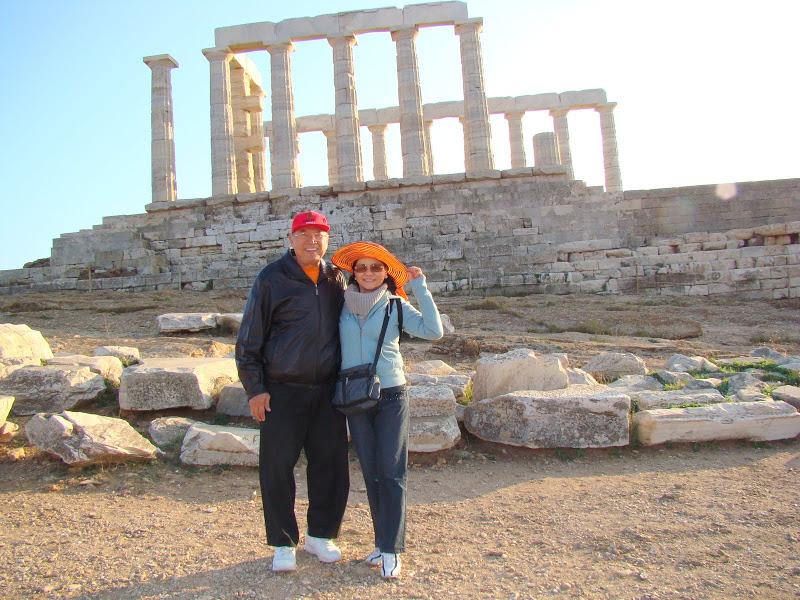
Just like many other monuments and sanctuaries around Greece, the historical facts about the Temple of Poseidon at Sounion are intertwined with myths. For example, it is said to be the place where the Athenian king Aegeus committed suicide by jumping off a cliff. Aegeus, who had positioned himself at Sounion to seek the return of his son Theseus from Crete, saw black sails on the ship and mistakenly believed that Theseus had been killed by the Minotaur, a creature with a head of a cow and the body of a man.
In reality, young Theseus was victorious but forgot to replace the black sails on his ship with white ones upon his return, which eventually led to his father's death and so, in commemoration , the name of Aegeus was given to the Aegean Sea.
Temple of Apollo Epicurius
Located in the remote mountains of the Peloponnese, the temple of Apollo Epicurius in Bassae is one of the largest and most well-preserved ancient temples. This temple is located on a high mountain with a height above sea level of up to 1,131m, surrounded by many narrow streams and 14.5km from Andritsaina town. This temple has a very special architecture, a combination of Doric, Ionic and Corinthian architecture. In fact, the decorative Corinthian pillars here are the oldest examples in the world.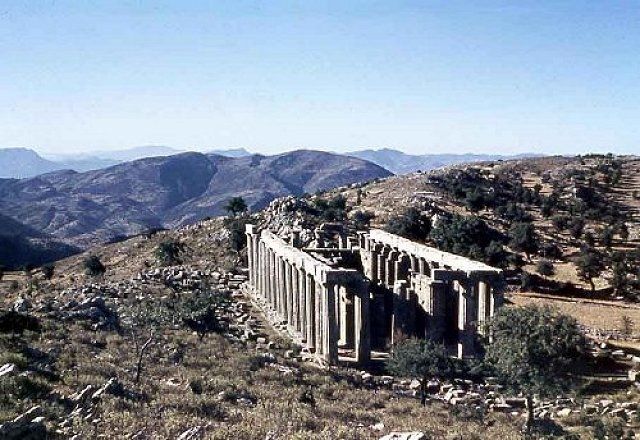
Built simply from gray honeycomb stone, exposed to winds all year round, the temple has a sad and cold look. While the exterior of the temple is designed with Doric architecture, the inside of the temple shows an unusual combination of Ionic and Corinthian architecture. Inside the temple are 10 Ionic columns in the low areas and a Corinthian column at the end of the southern row.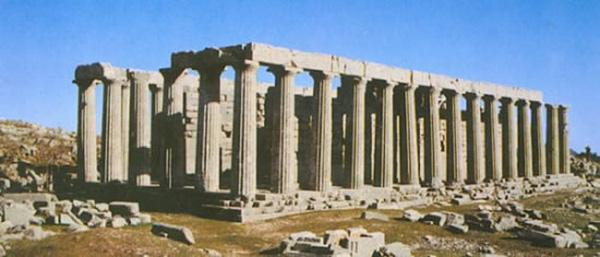
It is assumed that the villagers around here worshiped Apollo for protecting them, so they built this temple (the word Epicurius means helper, protector). Besides, there is also an assumption that they paid their own money to build the temple to hope Apollo would protect them. Perhaps that's why outside the temple are 15 pillars designed in the Donric style running along the length and 6 pillars horizontally.
Most of them still retain their original designs except for a few that have been lost. In particular, the isolated location and special significance of the temple have been the subject of research by scientists for two centuries. The temple also quickly became a symbol of people's devotion to the powerful god Apollo, the god of light, truth and art in Greek mythology, often represented in the form of a young man. The boy has blond hair, wears a silver bow and carries a lyre.
Erechtheion Temple
The Erechtheion or Erechtheum was an ancient Greek temple on the north side of the Acropolis in Greece dedicated to both Athena and Poseidon. The temple seen today was built between 421 and 406 BC. Its architecture may have been designed by Mnesicles, and its name comes from that of a tomb dedicated to the legendary Greek hero Erichthonius. The sculptor and mason of the structure was Phidias, who was hired by Pericles to build both the Erechteum and the Parthenon.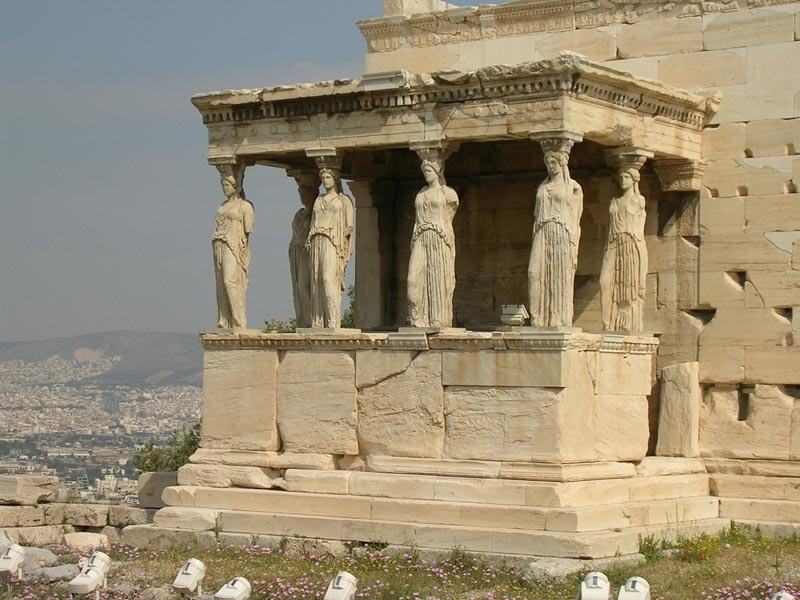
Some say it may have been built to honor the legendary king Erechtheus of Athens during the Archaic period. It is believed to be a replacement for the Peisistratid temple of Athena Polias destroyed by the Persians in 480 BC. The need to protect the many sacred sites nearby may explain the design of this complex. The main structure consists of up to four bays, the largest being the eastern bay, with a colonnade on its eastern side.
Other current thinking would think that the entire interior of the lower level and the eastern gate were used to reach the great shrine of Athena Polias via balcony and stairs and also as a public observatory. The entire temple is located on a slope, so the west and north sides are about 3 meters lower than the south and east sides. It was built entirely of marble from Mount Pentelikon, with black limestone slabs from Eleusis creating sculptures executed alongside the white marbles.
The temple had intricately carved door frames and windows, and its columns were elegantly decorated (much more beautiful than they are today). The door frames are painted, gilded and accented with gilded bronze and multi-colored glass beads. The building is known as the first example of decorative ribbon molding.

















![[ℕ𝕖𝕧𝕖𝕣] 𝕊𝕖𝕝𝕝 𝕐𝕠𝕦𝕣 𝔹𝕚𝕥𝕔𝕠𝕚𝕟 - And Now What.... Pray To The God Of Hopium?](https://cdn.bulbapp.io/frontend/images/79e7827b-c644-4853-b048-a9601a8a8da7/1)






















![[LIVE] Engage2Earn: Save our PBS from Trump](https://cdn.bulbapp.io/frontend/images/c23a1a05-c831-4c66-a1d1-96b700ef0450/1)


